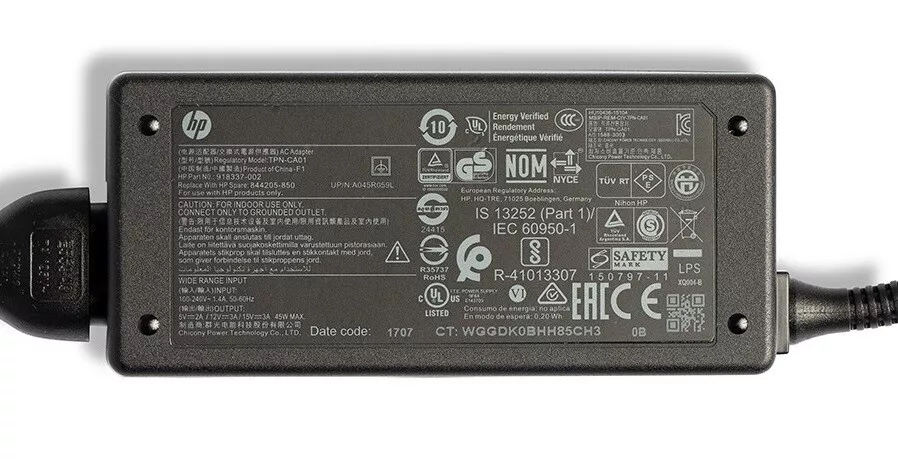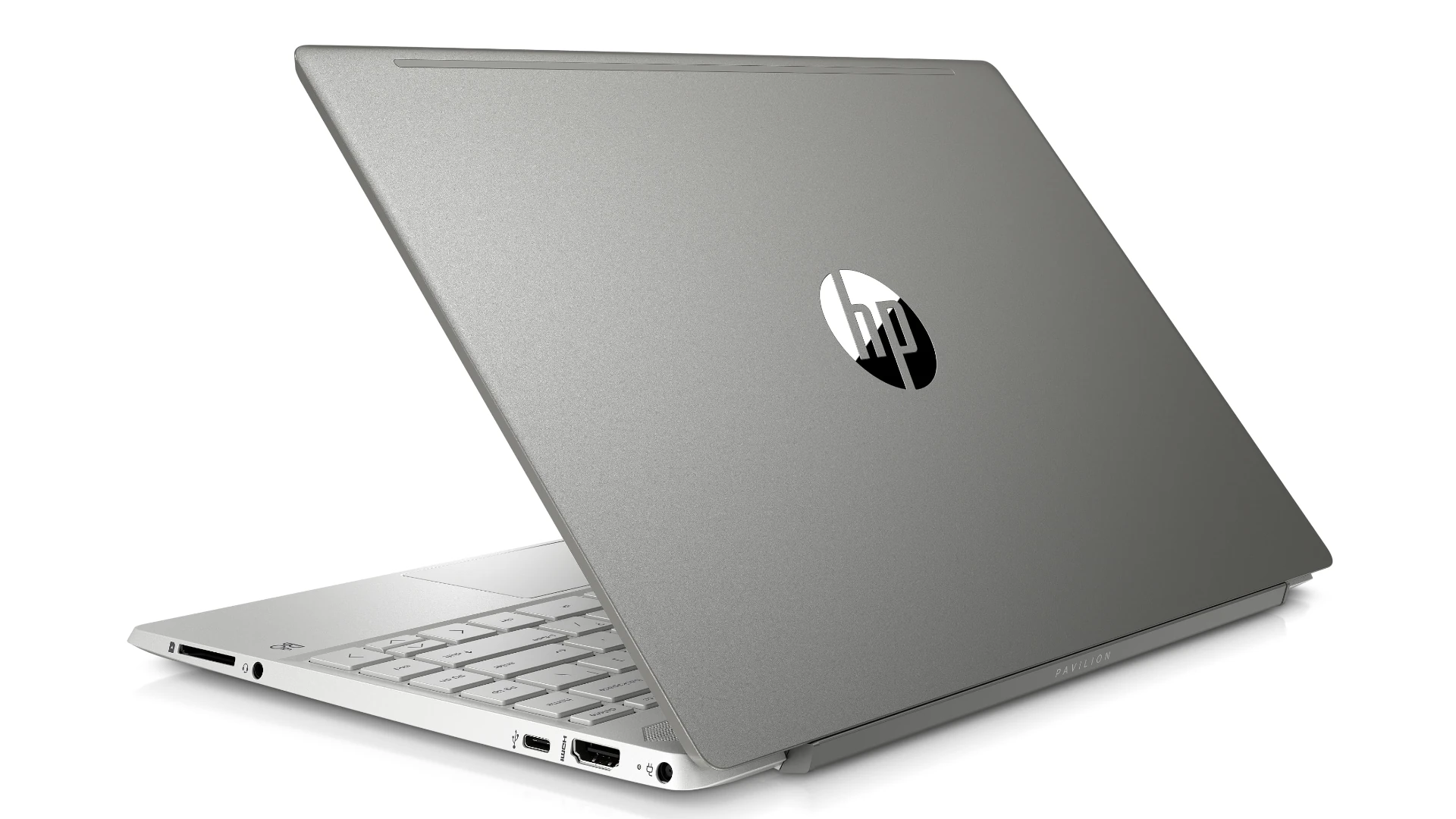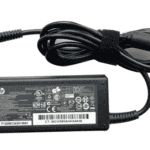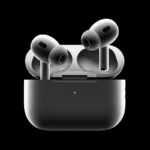Is your HP laptop plugged in but not charging? This frustrating issue can happen to anyone with a laptop. When your battery isn’t charging even though it’s connected to power, it can disrupt your work and cause unnecessary stress. The problem usually stems from one of several common causes: damaged power connections, battery issues, outdated drivers, or power management settings that need adjustment.
Fixing a charging problem often requires a step-by-step approach. Start by checking all physical connections, including the power cord and adapter for damage. Many users find that performing a hard reset solves the issue – simply shut down your laptop, unplug the power, remove the battery if possible, and hold the power button for about 15-20 seconds to discharge residual electricity.
Sometimes the solution is as simple as adjusting power settings in Windows. Turning off hibernation in the advanced power settings has resolved this issue for many HP Elitebook users. If these quick fixes don’t work, HP provides a Battery Check diagnostic tool that can help determine if your battery needs replacement or if there’s another underlying problem.

HP Laptop Not Charging: A Comprehensive Troubleshooting Guide
It can be frustrating when your HP laptop refuses to charge. This guide provides a step-by-step approach to diagnose and resolve common charging issues.
1. Preliminary Checks:
- Power Outlet: Ensure the wall outlet is functioning correctly by plugging in another device. Try a different outlet to rule out any power source issues.
- Power Adapter Connections:
- Laptop Connection: Make sure the power adapter is securely plugged into the charging port of your HP laptop. Wiggle it gently to check for any looseness.
- Adapter to Cable: Verify that the cable connecting the power brick to the laptop is firmly attached to the adapter.
- Wall Socket: Ensure the power adapter is fully plugged into the wall outlet.
- Inspect the Charging Cable and Adapter: Look for any visible signs of damage such as fraying, cuts, kinks, or exposed wires on the charging cable. Examine the adapter for cracks or damage. If you notice any damage, do not use the adapter and consider replacing it with an official HP-compatible charger. A damaged charger can be hazardous. Also, check for any burnt smell emanating from the adapter, which could indicate internal damage.
- Charger Indicator Light: Some HP power adapters have an indicator light that illuminates when it’s receiving power. Check if this light is on when the adapter is plugged into the wall. If the light is off, the adapter might be faulty.
- Test with a Different Charger (If Possible): If you have access to another compatible HP laptop charger, try using it with your laptop. If your laptop charges with the other adapter, the original charger is likely the problem. Ensure the replacement charger has the correct voltage and amperage for your HP laptop model to avoid damage.
2. Hard Reset Your Laptop:
Performing a hard reset can often resolve temporary glitches that might be preventing charging.
- Shut Down: Completely power off your HP laptop.
- Disconnect Peripherals: Unplug all external devices connected to your laptop, such as USB drives, printers, and external monitors.
- Remove Power Adapter: Disconnect the power adapter from your laptop.
- Remove Battery (If Removable): If your HP laptop has a removable battery, detach it.
- Press and Hold Power Button: Press and hold the power button for 15-30 seconds. This action discharges any residual power in the system.
- Reassemble (If Battery Removed): If you removed the battery, reinsert it now.
- Reconnect Power Adapter: Plug the power adapter back into your laptop and the wall outlet.
- Power On: Turn on your HP laptop and check if it starts charging.
3. Check Battery Health and Status:
Your operating system or the HP support tools might provide information about the battery’s health.
- Using HP Support Assistant (If Installed):
- Search for “HP Support Assistant” in the Windows search bar and open the application.
- In HP Support Assistant, navigate to “My devices” or a similar section.
- Select your laptop.
- Look for options related to “Battery and power” or “Diagnostics.”
- Run a battery health check or diagnostic test if available. This tool can identify if the battery is failing and needs replacement.
- Using Command Prompt (Windows):
- Open Command Prompt as an administrator (search for “cmd,” right-click, and select “Run as administrator”).
- Type the following command and press Enter:
powercfg /batteryreport /output "C:\battery_report.html" - Open the “battery_report.html” file from your C: drive in a web browser.
- Review the “Battery Health Analysis” section to see the difference between the designed capacity and the full charge capacity. A significant difference might indicate a degrading battery. Also, check the recent battery usage and charging history for any anomalies.
- Check Battery Status in BIOS:
- Shut down your laptop.
- Turn it on and immediately press the BIOS key repeatedly. The key varies depending on your HP model (it’s often Esc, F1, F2, F10, or F11). Refer to your laptop’s manual or the HP support website for the correct key.
- In the BIOS setup utility, look for options related to “Power,” “Battery,” or “System Information.”
- Check if the AC adapter is recognized and the battery status. If the BIOS doesn’t recognize the adapter even when plugged in, it could indicate a problem with the adapter or the laptop’s charging circuitry. Some BIOS versions also offer a battery test.
4. Update or Reinstall Battery Drivers:
Outdated or corrupted battery drivers can sometimes cause charging issues.
- Open Device Manager: Search for “Device Manager” in the Windows search bar and open it.
- Expand Batteries: Click on the arrow next to “Batteries” to expand the category.
- Uninstall Battery Drivers: Right-click on each entry under “Batteries” (usually “Microsoft ACPI-Compliant Control Method Battery”) and select “Uninstall device.” Do not worry if you see a warning prompt; click “Uninstall.”
- Restart Your Laptop: After uninstalling all battery-related drivers, restart your HP laptop. Windows will automatically reinstall the necessary drivers upon startup.
- Check for Windows Updates: Ensure your operating system is up to date as updates often include driver updates and bug fixes that might resolve charging problems. Go to “Settings” > “Update & Security” > “Windows Update” and click “Check for updates.”
5. Inspect the Laptop’s Charging Port:
A damaged or dirty charging port can prevent proper contact with the power adapter.
- Visual Inspection: Carefully examine the charging port on your laptop for any signs of physical damage, such as bent or broken pins.
- Check for Debris: Look inside the port for any dust, lint, or other debris that might be obstructing the connection.
- Gentle Cleaning (If Necessary): If you see debris, try to gently clean the port using a can of compressed air. Avoid inserting any solid objects into the port as this could cause damage. If you suspect damage to the charging port, it might require professional repair.
6. Check for BIOS and Firmware Updates:
Outdated BIOS or firmware can sometimes cause hardware-related issues, including charging problems.
- Identify Your Laptop Model: Find the exact model number of your HP laptop. This is usually located on a sticker on the bottom of the laptop or in the system information.
- Visit HP Support Website: Go to the official HP support website (http://support.hp.com).
- Enter Your Model Number: Enter your laptop’s model number in the search bar.
- Find Drivers and Downloads: Navigate to the “Drivers & Downloads” section for your laptop model.
- Look for BIOS/Firmware Updates: Check for any available BIOS or firmware updates. If there’s a newer version than what’s currently installed on your laptop, download it.
- Follow Installation Instructions: Carefully follow the instructions provided by HP to install the BIOS/firmware update. Important: Do not interrupt the BIOS update process, as this could cause serious damage to your laptop. Ensure your laptop is connected to a stable power source during the update.
7. Run HP Hardware Diagnostics (UEFI):
Many modern HP laptops have built-in hardware diagnostic tools that can test various components, including the battery and power adapter.
- Turn off your computer.
- Press the power button, and then immediately press the Esc key repeatedly until the Startup Menu opens.
- Press F2 (System Diagnostics).
- In the HP PC Hardware Diagnostics (UEFI) menu, select “Component Tests.”
- Navigate to “Power” and run the “Battery Test” and the “AC Adapter Test.” Follow the on-screen instructions to complete the tests. The results will indicate if there are any hardware issues with the battery or the power adapter.
8. Consider Software Conflicts:
In rare cases, certain software or background processes might interfere with the charging process.
- Boot in Safe Mode: Restart your laptop and repeatedly press the Safe Mode key during startup (usually F8 or Shift + F8). In Safe Mode, only essential drivers and services are loaded. If your laptop charges correctly in Safe Mode, it suggests that a third-party software or driver is causing the issue.
- Identify Conflicting Software: If charging works in Safe Mode, try to recall any recently installed software or driver updates. Uninstall them one by one and restart your laptop to see if the charging issue is resolved.
9. Battery Lifespan:
Laptop batteries have a limited lifespan and their capacity to hold a charge degrades over time. If your laptop is several years old, the battery might have reached the end of its life and needs replacement, even if the charging system is functioning correctly. If diagnostic tests indicate a significantly reduced battery capacity, replacement is likely necessary.
10. Seek Professional Help:
If you have tried all the troubleshooting steps above and your HP laptop still isn’t charging, there might be an internal hardware problem with the charging circuitry on the motherboard or another component. In such cases, it’s best to contact HP support or take your laptop to a qualified computer repair technician for diagnosis and repair.
By systematically working through these steps, you should be able to identify and resolve the reason why your HP laptop is not charging. Remember to be careful when handling electronic devices and consult professional help if you are uncomfortable with any of the troubleshooting steps.
Key Takeaways
- Check physical connections and perform a hard reset by holding the power button for 15-20 seconds with power disconnected.
- Adjust Windows power settings, especially hibernation options, which often resolves charging issues.
- Use HP’s Battery Check diagnostic tool to test battery health and determine if replacement is needed.
Understanding the Problem
When your HP laptop won’t charge despite being plugged in, it can be frustrating and worrying. The charging issue could stem from various sources, ranging from simple cable connections to more complex battery or hardware problems.
Charging Process Overview
The charging process in an HP laptop involves several components working together. When you plug in your power adapter, electricity flows through the AC adapter, into the charging port, through internal circuits, and finally to the battery.
The laptop’s charging circuit includes a power management chip that controls the flow of electricity. This chip communicates with the battery to determine its charge level and needs. A status indicator (usually an LED light) shows whether charging is happening.
Your laptop’s BIOS and operating system monitor battery health and charging status. They display this information on screen, often as a percentage and “plugged in, charging” message when everything works correctly.
Common Causes of Charging Issues
Several factors can prevent your HP laptop from charging properly. Power supply problems are among the most common. A damaged power adapter, frayed cable, or loose connection might not deliver electricity to your laptop. Try wiggling the cable connection point to check for loose connections.
Battery issues also frequently cause charging problems. Batteries naturally degrade over time and lose their ability to hold a charge. A completely drained or old battery might take longer to show charging activity. Some HP laptops have batteries that can be reset by removing them (after shutting down) and holding the power button for 30-60 seconds.
Software glitches can sometimes interfere with charging. Driver or firmware issues might prevent proper communication between hardware components. Sometimes a simple restart fixes these problems.
Port damage is another possibility. Bent pins or debris in the charging port can block the connection. Inspect your port carefully with a flashlight for any visible issues.
Troubleshooting Steps
When your HP laptop won’t charge, several common issues might be causing the problem. With the right approach, you can often fix this without professional help.
Preliminary Checks
First, check if your laptop is recognizing power at all. Look for any lights that turn on when the charger is connected. If you see no lights, the problem might be with the power supply.
Try a hard reset by shutting down your laptop completely. Remove the battery if possible, unplug the power adapter, and hold down the power button for 60 seconds. This discharges any remaining electricity in the system and can reset the charging circuit.
Make sure your power outlet works by plugging in another device. Sometimes the issue is as simple as a tripped circuit breaker or a faulty wall outlet. Try connecting your laptop to a different power outlet to rule this out.
Check your laptop’s power settings in Windows. Sometimes power management settings can affect charging behavior.
Battery and Power Source Verification
Examine your battery health status. Over time, laptop batteries degrade and may stop holding a charge properly. To check battery health on your HP laptop:
- Press Windows key + X
- Select “Power Options”
- Click “Battery Health”
If your battery shows significant wear, it might need replacement.
Try removing the battery (if possible) and running the laptop with just the AC adapter. If it works fine without the battery, the battery might be the culprit.
Update or reinstall battery drivers. Faulty drivers can sometimes cause charging issues:
- Open Device Manager
- Expand “Batteries”
- Right-click on “Microsoft ACPI-Compliant Control Method Battery”
- Select “Uninstall device”
- Restart your laptop so Windows can reinstall the driver
AC Adapter and Charging Port Examination
Inspect your charging cable for any visible damage. Look for fraying, bent pins, or other physical issues. The adapter brick should not be making unusual sounds or feeling unusually hot.
Check the specifications of your charger. Using an adapter with insufficient wattage can cause charging problems. HP laptops typically need specific chargers – check your model’s requirements.
Examine the charging port on your laptop carefully. Look for:
- Bent pins
- Dust or debris buildup
- Loose connection
Use a flashlight to look inside the port. If you see dust, gently clean it with compressed air or a soft brush. Avoid using metal tools that could damage the contacts.
Try wiggling the connector gently while plugged in. If charging starts and stops with movement, the port might be loose or damaged inside.
Software and Drivers
Software-related issues often cause charging problems in HP laptops. Outdated drivers, operating system bugs, and incorrect power management settings can prevent your battery from charging properly even when physically connected to power.
Operating System Considerations
Windows 10 includes various power management features that might interfere with battery charging. Check your power plan settings by right-clicking the battery icon in the taskbar and selecting “Power Options.” Make sure your plan isn’t set to limit battery charging.
Some HP laptops have a battery health feature that stops charging at 80% to extend battery life. You can check if this is enabled through HP Support Assistant.
Running Windows Update can resolve charging issues. Go to Settings > Windows Update > Check for updates. Microsoft regularly releases patches that fix power management bugs.
If your laptop recently updated, try rolling back to a previous version if the charging issue started after an update.
Battery Driver Updates
Outdated or corrupted battery drivers often prevent proper charging. HP Support Assistant can help identify and install the correct drivers for your specific model.
To manually update battery drivers:
- Open Device Manager (right-click Start menu)
- Expand “Batteries” category
- Right-click “Microsoft ACPI Compliant Control Method Battery”
- Select “Update driver”
- Choose to search automatically for updated driver software
If updating doesn’t work, try uninstalling the battery driver and restarting your laptop. Windows will reinstall the driver automatically during startup.
Installing the latest HP-specific power management software from their support website can also resolve charging problems.
Device Manager and BIOS Settings
BIOS settings control fundamental hardware functions, including battery management. Outdated BIOS firmware might cause charging problems.
Download and install the latest BIOS update from HP’s support website for your specific model. This process varies by laptop model but typically involves running an installer that handles the update.
In Device Manager, check for yellow warning icons next to any battery-related entries. These indicate driver problems.
Try this troubleshooting sequence:
- Disable and reenable the battery driver in Device Manager
- Restart in Safe Mode to see if charging works there
- Reset the System Management Controller by shutting down, unplugging, removing the battery (if possible), holding power button for 15 seconds, then reassembling
Some HP laptops have battery threshold settings in BIOS that may prevent full charging. Access BIOS at startup (usually F10 key) and look for battery settings.
Technical Support and Warranty
When your HP laptop won’t charge, getting professional help might be necessary if troubleshooting steps don’t work. Understanding your warranty coverage and support options can save you time and potentially money.
Contacting Tech Support
HP offers several ways to get technical support for charging issues. You can visit the HP Support website and use their Virtual Assistant to walk through basic troubleshooting steps. For more complex problems, call their support line or use the live chat option on their website.
Before contacting support, gather your laptop’s serial number and model information. This helps representatives provide faster, more accurate help. Tech support can run remote diagnostics in some cases to identify if the charging problem stems from software or hardware issues.
HP support agents often recommend trying a hard reset first, as mentioned in their troubleshooting guides. This simple step sometimes resolves charging problems without requiring service.
Check Warranty Status
Most HP laptops come with a standard one-year warranty that may cover charging port repairs. You can verify your warranty status by entering your serial number on HP’s warranty check page.
According to HP support information, charging port failures may be covered under warranty if they result from manufacturing defects. However, physical damage from drops or misuse typically isn’t covered.
If your laptop is still under warranty, HP will usually repair or replace faulty charging components at no cost. For out-of-warranty devices, HP offers paid repair services, though replacing a motherboard can be expensive.
Some users purchase extended warranties or HP Care Packs that provide longer coverage periods and sometimes include accidental damage protection. These plans can be valuable for charging port issues, which often require professional repair.
Battery Management
Good battery management helps fix charging problems and extend your HP laptop battery’s lifespan. Taking proper care of your battery can prevent many common charging issues.
Battery Calibration Techniques
Battery calibration resets the battery meter to show accurate charge levels. Over time, your laptop may display incorrect battery percentages, causing charging problems.
To calibrate your HP laptop battery:
- Charge your battery to 100%
- Unplug the power adapter
- Use your laptop until it completely drains and shuts down
- Let it sit unpowered for 3-5 hours
- Plug it in and charge to 100% without interruption
This process helps the battery meter recognize the true capacity of your battery. HP laptops with non-removable batteries can be calibrated using this method.
For laptops with removable batteries, you can also try removing the battery, running the laptop on AC power only, then reinstalling the battery. This sometimes resolves charging issues related to connection problems.
Considerations for a New Battery
When your HP laptop won’t charge even after trying other fixes, you might need a new battery. Laptop batteries typically last 2-3 years or 300-500 charge cycles.
Signs you need a new battery include:
- Battery won’t hold a charge
- Laptop only works when plugged in
- Battery drains extremely quickly
- Swelling or physical damage
When buying a replacement, always choose genuine HP batteries or reliable third-party options compatible with your specific model. Using incorrect batteries can damage your laptop or create safety hazards.
For laptops with removable batteries, replacement is simple. Just power down, remove the old battery, and insert the new one. Non-removable batteries require professional service from HP or authorized repair centers.
Hardware Solutions
When your HP laptop won’t charge, checking physical components can often resolve the issue. Sometimes the problem isn’t software-related but stems from hardware that needs attention.
Power Button and Keyboard Functionality
HP laptops sometimes develop charging issues related to power button problems. Try holding the power button for 30 seconds while the laptop is unplugged. This discharges residual electricity and can reset the power management system.
The keyboard can also play a role in charging problems. Some HP models have function keys that control power settings. Look for keys marked with battery icons (often F5 or F6) and press them in combination with the Fn key to check if battery settings were accidentally changed.
Check the charging port for damage or debris. Even small pieces of dust can prevent proper connection. Gently clean the port with compressed air or a soft brush.
Examine the power adapter for frayed wires or bent connectors. The charging tip should fit snugly in the port without wobbling. Many charging issues stem from damaged adapters rather than laptop problems.
Frequently Asked Questions
HP laptop charging issues can be frustrating but are often fixable with the right troubleshooting steps. Many common problems have simple solutions that don’t require technical expertise.
Why does my HP laptop indicate it is plugged in but not charge?
This problem often stems from battery or power management issues. First, check if your power adapter is properly connected to both the laptop and wall outlet.
Try a hard restart by removing the battery (if possible), unplugging the power cord, holding the power button for 30 seconds, then reconnecting everything. This resets the power system.
The battery itself might be worn out or damaged. Run HP Support Assistant to check battery health—a battery reporting below 40% capacity may need replacement.
How can I fix the issue of my HP laptop not turning on despite being plugged in?
Start by checking your power connections. Ensure the adapter is securely plugged into both the wall and laptop.
Try a different power outlet to rule out electrical issues. If possible, test with another compatible HP power adapter to determine if your adapter is faulty.
Perform a power reset by unplugging everything, removing the battery if possible, holding the power button for 15-30 seconds, then reconnecting. This often resolves temporary system hangups.
What should I do if there is no light indicator when my HP laptop is plugged in?
Check if the power adapter itself has a light indicator—if it’s not lit, the adapter might be faulty or the outlet may not work. Try a different outlet.
Inspect the power cord and adapter for physical damage. Look for frayed wires, bent pins, or loose connections that might prevent proper power delivery.
If possible, test with another compatible adapter. If the alternate adapter shows a light, your original power supply needs replacement.
How can I address the blinking charging light on my HP laptop?
A blinking charging light often indicates a power delivery problem. It may mean the laptop is receiving some power but not enough to charge properly.
Make sure you’re using the correct adapter for your laptop model. HP laptops require specific voltage and amperage—using an incompatible adapter can cause blinking.
Try disconnecting all peripherals (USB devices, external monitors) as they might be drawing too much power. Reset the battery connection if possible by removing and reinserting it.
What steps should I take if my HP laptop stops charging after a Windows 10 update?
Update your BIOS from the HP Support website. Outdated BIOS versions can cause compatibility issues with Windows updates and affect power management.
Check for driver updates, particularly for “Battery Management” or “ACPI-compliant” devices in Device Manager. Outdated drivers can prevent proper charging.
Run Windows troubleshooter by going to Settings > Update & Security > Troubleshoot > Power. This built-in tool can identify and fix common charging problems.
How can I troubleshoot charging issues with an HP laptop running Windows 11?
Install the latest HP drivers and software. Go to HP.com, enter your model number, and download the most recent updates specifically for Windows 11.
Check if Fast Startup is causing issues. Go to Control Panel > Power Options > Choose what the power buttons do > Change settings currently unavailable > uncheck “Turn on fast startup.”
Try a clean boot to identify software conflicts. Press Windows+R, type “msconfig,” disable non-Microsoft services, and restart. If the laptop charges normally, a third-party program may be interfering.







